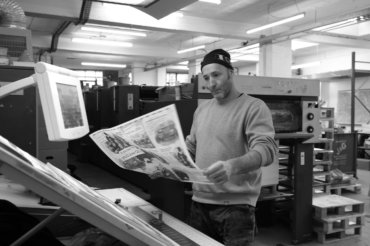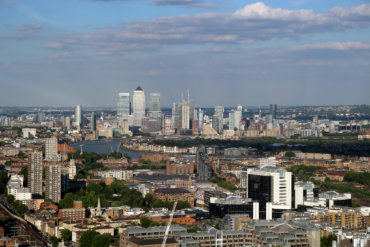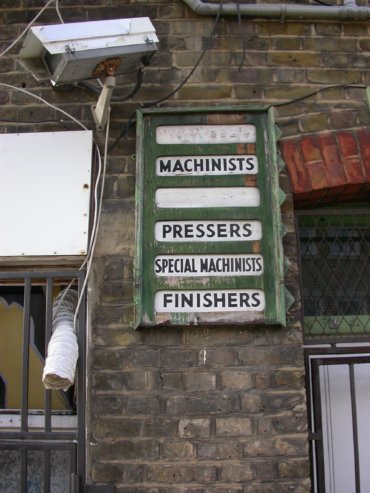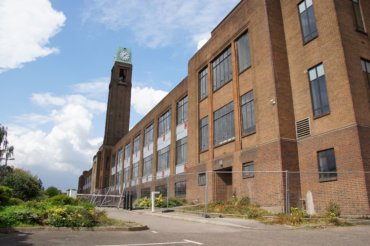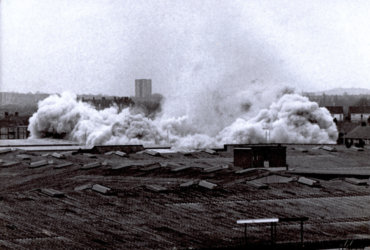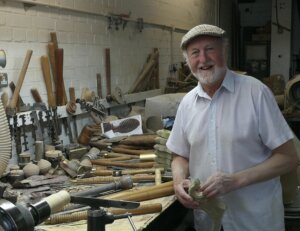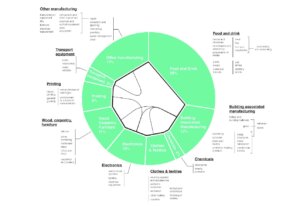
London’s manufacturing: a brief history
Rolling stock works at Action 1946, © Transport for London
With a heritage of trade, culture and productivity London has played an important role in UK industry for centuries. Whilst manufacturing in the city has changed, it remains part of London’s economic foundations. This chapter explores these changes over time.
Centre of making
The Industrial Revolution began in Britain in the late 1700s and heralded dramatic changes in manufacturing. During the first half of the 19th century British-made goods dominated world trade. For a time the country was the world’s largest manufacturer – dubbed ‘the workshop of the world’.
London was a leading centre of UK manufacturing from the late 18th to mid-20th century. In 1861 around one sixth of the country’s manufacturing workers were employed in the capital. Some large British cities were known primarily for one industry, like Manchester’s textile production. London, however, was home to a diverse set of industries including garment, furniture, and jewellery making. These businesses were situated towards the end of the production chain and their location was driven by proximity to large markets or a large and skilled workforce11. London, during this period, offered them both.
London’s port was an important part of the country’s trading infrastructure. By the late 1700s more than half of England’s imports and exports came through the city’s docks. The situation of manufacturing and industry influenced London’s geography and its neighbourhoods. Today this heritage is visible in city street names like Cable Street, a ‘rope walk’ where businesses supplied cables for ships.
Post-war policies and deindustrialisation
In the period following the Second World War, a series of policy interventions attempted to constrain the growth of industry in core cities like London and to encourage growth in other regions of the country. This approach was taken in response to high regional unemployment, and an attempt to ‘take the work to the workers’. For a period London’s manufacturing sector grew at half the national rate and its overall employment levels grew at a lower rate than any other region bar one.
With the onset of deindustrialisation the ensuing decades signalled a period of transition for the UK’s manufacturing base. During this period manufacturing began to take advantage of an increasingly globalised world and move overseas in search of lower production costs. Although the sector remained important for the economy (in 1970, manufacturing still accounted for 27 percent of the UK’s economic output) during the 1960s and 70s it began to see a relative decline in its share of output and employment. These factors contributed to the decline of manufacturing activity within London.
Between 1971 and 1996 London shed around 600,000 manufacturing jobs. The city’s population was also declining, a trend which began during the war. By the 1970s and 80s concerns about inner city decline led to policy strategies to preserve and improve what was left of the city’s manufacturing base in order to retain employment opportunities. An Industrial Strategy developed by the Greater London Council (GLC), the city’s governing body at the time, was developed in response to these challenges. It identified a range of key sectors and developed actions for each, including interventionist-style policies to boost industry. Its implementation was curtailed when the GLC was abolished in 1986.
Urban regeneration
The1990s saw London and its centre become a desirable place to live once again. Its population began to grow and, with this, housing provision became the dominant focus. This led to the release of vacant employment sites in favour of residential development and it became increasingly difficult to protect industrial space. Industry, including manufacturing, continued to decline, particularly in the centre.
Over this period knowledge sectors, including professional services, more than doubled their employment footprint. This shift to ‘higher-skilled, higher productivity employment’ has enabled London to thrive as a post-industrial city.
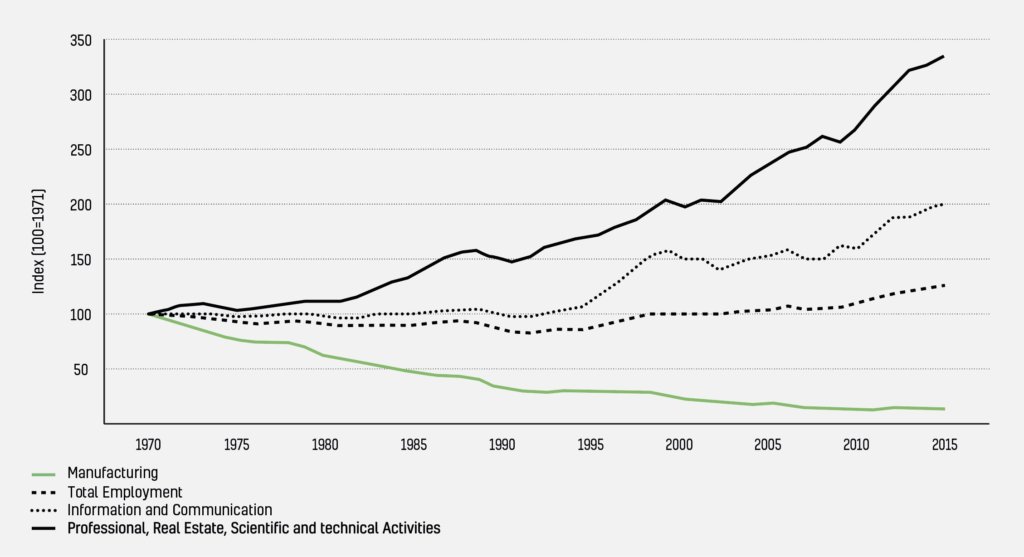
Manufacturing in London today
London’s manufacturing base has declined significantly over the last 50 years. Its role has shifted as both the city and the country as a whole have developed post-industrial economies. However, while the city is clearly no longer geared towards manufacturing, it is still an important component of London’s vast and diverse economy. London should not be written off too quickly as a city that makes.
In London today the manufacturing sector accounts for 2.2 percent of total employment and a similar share of GVA. Whilst this is a small proportion, the city still plays an important role in the nation’s manufacturing sector: more people are employed in manufacturing in London (114,000) than in other UK city regions such as Greater Manchester (108,000) and West Yorkshire (99,000); places more often perceived as manufacturing strongholds. Its output is significant too; at £8.5bn, London’s total GVA from manufacturing is close to that of the sector across all of Wales. Looking at output per hour as a measure of productivity, London is in line with the UK average for the sector. Whilst the city’s manufacturing employment figures have reduced over time, these seem to have reached a plateau since the end of the financial crisis.
As the sector has developed over time, its needs have also changed. A study of Park Royal (London’s largest industrial site) describes a trend that has seen some of the larger businesses on the site relocate or close, to be replaced by smaller businesses today. Trends like this one, along with the enormous growth of the services sector relative to manufacturing, make the picture in London more complicated than one of simple decline. It would be a mistake to think that London’s manufacturing sector is destined to shrink further or that it is not relevant for the city simply because it makes up a small part of its economy. The rest of this chapter will explore London’s manufacturing activities in more detail.
